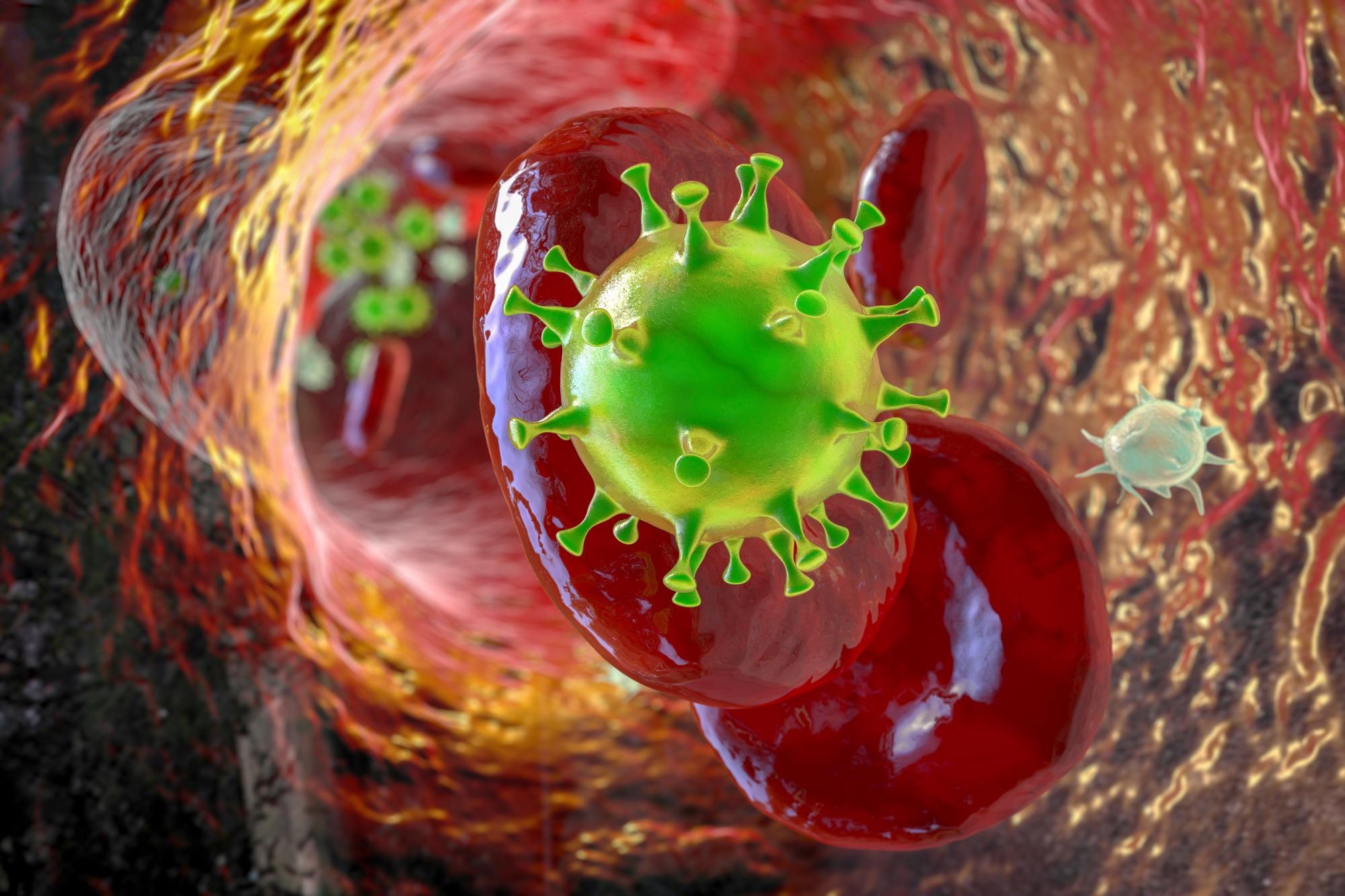Various studies have reported the hyperactivation of platelets during coronavirus disease 2019 (COVID-19) infection. However, extensive research is needed to understand the mechanisms involved in such an activation.
 Study: Platelet activation by SARS-CoV-2 implicates the release of active tissue factor by infected cells. Image Credit: Kateryna Kon / Shutterstock
Study: Platelet activation by SARS-CoV-2 implicates the release of active tissue factor by infected cells. Image Credit: Kateryna Kon / Shutterstock
About the study
The present study examined the impact of SARS-CoV-2 or components derived from infected cells in platelet activation.
The team collected venous blood samples from healthy donors. SARS-CoV-2 was also obtained and propagated in human lung epithelial A549 cells that overexpressed angiotensin-converting enzyme 2 (ACE2). Culture supernatant (C.Med) obtained from non-infected cells was used as a negative control.
The potential of SARS-CoV-2 in platelet activation was assessed based on the frequency of platelets that expressed the active forms of αIIbβ3 integrin (αIIbβ3*) and CD62P (αIIbβ3*CD62P), the release of EVs (CD41+EVs), and the expression density of αIIbβ3*. Furthermore, the team obtained plasma preparations from non-immune donors who had no SARS-CoV-2 antibodies.
Platelet activation was further assessed by incubating the recombinant full-trimeric SARS-CoV-2 spike (S) protein, a recombinant SARS-CoV-2 receptor binding protein (RBD), and RBD-contained S1 subunit in plasma samples. The plasma deficient factors from coagulation factors like FI, FII, FV, FVII, FVIII, FX, FIX, FXI, FXII, FXIII, vWF, protein S, and protein C were incubated with SARS-CoV-2 or C.Med and were subsequently added to platelets for the assessment of activation.
Furthermore, the team assessed the role of thrombin in the plasma-dependent platelet activation mediated by SARS-CoV-2. This was achieved by incubating SARS-CoV-2-contained plasma in the presence or absence of a thrombin inhibitor called D-phenylalanyl-prolyl-arginyl chloromethyl ketone (PPACK).
Results
The study results showed that SARS-CoV-2 induced a fast and substantial rise in the proportion of CD62P platelets and increased the intensity of αIIbβ3* expression. Furthermore, after 60 minutes of SARS-CoV-2 exposure, most of the platelets expressed CD62P, while the levels of EVs improved significantly. However, SARS-CoV-2 did not activate the platelets in the presence of C.Med and the absence of plasma. In contrast, remarkable changes were observed in the thrombin levels, irrespective of the presence of plasma.
The visualization of platelets in a fibrinogen-coated microfluidics chamber showed that SARS-CoV-2 induced the formation of large clots in the presence of plasma, while these clots were absent in the presence of C.Med. In addition, the team observed robust platelet activation in the presence of SARS-CoV-2 at concentrations of 1:12.5 to 1:50 v/v. Moreover, the EVs did not significantly increase when the concentration of SARS-CoV-2 was at 1:200 v/v dilution; however, this concentration level sufficiently induced the surface-level expression of αIIbβ3* and CD62P platelets. In contrast, platelet activation was not observed in the presence of C. Med.
SARS-CoV-2 did not induce platelet activation in the absence of FII, FX, and FVII. Moreover, these activation levels were comparable to those observed in the negative control samples. This indicated that tissue factor (TF)-mediated coagulation was involved in SARS-CoV-2 induction of platelet activation.
The team observed that platelet activation was entirely blocked due to thrombin inhibition. Furthermore, SARS-CoV-2-mediated activation of platelets in naive wild-type mice needed the presence of plasma as well as thrombin activation. Moreover, since the SARS-CoV-2 S protein does not detect murine ACE2 and there is no FcyRIIA expression by murine platelets, the team concluded that platelet activation was dependent on neither the ACE2- nor the Fc-receptor.
Moreover, the blockage of activation due to a thrombin inhibitor showed that the coagulation initiation, as well as thrombin production, was not a result of viral fixation. The team also found that high concentrations of untreated C.Med or beta-propiolactone-treated C.Med did not activate platelets even after incubating for 60 minutes. Overall, this showed that platelet activation induced by infectious and fixed SARS-CoV-2 was dependent on the levels of both plasma and thrombin.
Furthermore, significant levels of TF activity were observed on SARS-CoV-2 preparations, while TF activity was not found in C.Med. This suggested that SARS-CoV-2-infected cells generated the production of active TF and the presence of active TF was associated with SARS-CoV-2 infection. Notably, TF activity was higher in patients with severe and non-severe COVID-19 as compared to healthy participants. Among these two patient groups, TF activity was significantly higher in severe patients. This indicated SARS-CoV-2-induced TF expression, which further led to platelet activation.
Overall, the study findings showed the importance of differentiating viral components in understanding the viral mechanism involved in infections. The researchers believed that this study could serve as a foundation for developing new therapies against COVID-19.
Journal reference:
- Florian Puhm, Isabelle Allaeys, Emile Lacasse, Isabelle Dubuc, Yannick Galipeau, Younes Zaid, Loubna Khalki, Clemence Belleannee, Yves Durocher, Alain R. Brisson, Alisa S. Wolberg, Marc-André Langlois, Louis Flamand, Eric Boilard; Platelet activation by SARS-CoV-2 implicates the release of active tissue factor by infected cells. Blood Adv 2022; bloodadvances.2022007444, DOI: https://doi.org/10.1182/bloodadvances.2022007444, https://ashpublications.org/bloodadvances/article/doi/10.1182/bloodadvances.2022007444/485001/Platelet-activation-by-SARS-CoV-2-implicates-the